Fifty Chosen Articles:
Number Twenty-Five.
The fifth of seven consecutive book reviews.
Originally posted in August 2020.
The recovery of the thirty authors (15 women and 15 men) in the book Do Tell! had nothing at all to do with a “God”, referred to 281 times in the first 164 pages of the book Alcoholics Anonymous.
In 2018 Brent based his doctoral dissertation, “Experiences of Atheists and Agnostics in Alcoholics Anonymous”, entirely on the book Do Tell! Stories by Atheists and Agnostics in AA.
What follows are excerpts from his dissertation – some of the inspiring and helpful contents of Do Tell!
Introduction
AA Agnostica “attempts to be a helping hand for the alcoholic who reaches out to Alcoholics Anonymous for help and finds that she or he is disturbed by the religious content of many AA meetings”. In doing so, they post blogs, maintain a website, and publish literature. One of their publications, Do Tell! Stories by Atheists & Agnostics in AA, was analyzed… for the purpose of answering the following question: What are the experiences of Alcoholics Anonymous members who identify as atheist or agnostic?
Do Tell! Stories by Atheists & Agnostics in AA is a pre-existing compilation of AA members who identify as atheist or agnostic. The book is published independently by AA Agnostica and edited by Roger C., who reported that the 30 stories were selected from 50 original submissions. Subjects were not prompted with any specific definition of “atheist” or “agnostic” although they were all readers of AA Agnostica, which rejects the “Christian anthropomorphic and interventionist male deity” specified in the book Alcoholics Anonymous.
Permission to use the content for research purposes was granted by the publisher.
Positive Experiences in Recovery Through AA
Community Benefits of AA
A majority of the stories mention benefits from AA related to relationships and connection with other people. Codes encompassed in this theme included social acceptance, accountability, shared experience, fellowship, role models/sponsorship, or general support. Authors consistently noted participation in fellowship and connection with other AA members as a resiliency factor in their recovery. Author 5 [Russ H.] noted “they allowed me to talk. They listened as I revealed anger, fear and shame and they were neither shocked nor disapproving… The friendship and love from those people, and others in the years that have followed, changed my life.” [Do Tell! p. 34]
Other authors went so far as to identify community benefits as one of the reasons they did not feel the need to identify a higher power. For instance, Author 8 [Suzanne M.] stated that “it is the human fellowship of AA that keeps me sober. I can find no evidence, in my sobriety, of an interfering god who has played a part in it.” [Do Tell! p. 50]
Internal Benefits of AA
[This theme] included those stories that endorsed benefits of AA unique to the individual experience of the author, including personal and emotional growth. This theme included codes such as gratitude, happiness, relief from cravings, sustained sobriety, freedom, serenity, emotional maturity, wisdom, and hope. Another consistent theme born from the text was internal reactions and personal development identified as a benefit of AA affiliation.
Author 11 [Gabe S.] noted many of these benefits: “Through inventory, sharing, making amends, meditation, helping others and trying to do the right thing, let go and leave the rest up to nature, I have learned how to calm my emotions, to accept others and feel accepted by them, to feel connected to the world and the sentient, feeling beings in it, to feel worthy of my place in the universe. [Do Tell! p. 69]
Others noted feelings of gratitude, hope, and emotional maturity, summarized well by Author 19 [Neil F.]: “Today my life is far removed from that seemingly hopeless state I was in when I first came to AA.” [Do Tell! p. 113] Author 21 [Marnin M.] further contributed that “AA saved my life, and I am forever grateful for the opportunities it has provided me. Because of the AA program… I try to live as full and as emotionally satisfying a life as possible.” [Do Tell! p. 119]
Indirect Benefits of AA membership
Indirect benefits of AA membership included stories which indicated improvements in other facets of life as a result of involvement with 12-step recovery (e.g., regained employment, repaired relationships, fulfilled vocational or educational goals, developing good boundaries, or coping with difficult life experiences). Though less prevalent, indirect benefits gained from AA affiliation were nonetheless frequently noted. Many stories related regaining employment, going back to school, or developing and maintaining healthy interpersonal relationships. Author 18 [Ann M.] noted the most common indirect benefit, being able to cope with adversity that happens in life.
Navigating the Spiritual Component of AA
Doctrinal Differences
Author 1 [Nell Z.] concisely identified their experience as being a non-believer in an AA meeting: “The first time I came into an AA meeting I felt like I had to squeeze past God to get through the door” [Do Tell! p. 9]. Author 12 [Betsy M.] noted objections to the conference approved AA literature: “My first roadblock was the Big Book. I couldn’t stand it. It struck me as a self-help book for Christian men from my father’s generation.” [Do Tell! p. 71]
Author 8 [Suzanne M.] noted objections based on a reminder of their own negative experiences being raised in a religious tradition: “The references to ‘God,’ ‘He,’ and ‘Him’ felt like a strange throwback to the unthinking acceptance of Christian mythology of my childhood Sunday School days.” [Do Tell! p. 49] Author 23 [John C.] noted that this component likely kept them from approaching sobriety earlier: “If it weren’t for the overt religious aspects of AA, I might have been spared years of suffering.” [Do Tell! p. 135]
Negative Interactions With Other Members Based on Atheist or Agnostic Beliefs
Author 29 [Chuck K.] noted that “when I told some people I was an atheist, they assured me I’d drink again unless I changed my ways and got with God.” [Do Tell! p. 170] Author 23 [John C.] noted a similar experience: “I left that first meeting with AA members chasing after me, telling me they were positive there was a god and I needed to believe in him. I thought I would never return.” [Do Tell! p. 130]
Author 17 [life j.] indicated that their belief affected their ability to find a sponsor: “Finding a sponsor who wouldn’t harass me about finding a higher power was real difficult.” [Do Tell! p. 98] Author 19 [Neil F.] even indicated that coming out as atheist had an impact on relationships they had developed in AA: “My disclosure [of being an atheist] caused some pain, one person called me a few names, and one person fired me as his sponsor, some rolled their eyes when I spoke, but others realized that I hadn’t changed and still accepted me.” [Do Tell! p. 113]
Spiritual Experiences
Author 1 [Nell Z.] connected their spiritual journey to humanistic connection: “The spiritual principles of AA, such as honesty, open-mindedness, willingness and brotherly love, can be practiced by anyone, God-believer or not… I equate my spirituality to my humanistic journey toward genuine human connection, service, love, and kindness.” [Do Tell! p. 12]
Other authors noted a reconnection with existing faith or cultural traditions that they had previously lost. Author 4 [Julie B.] captured this well. “I learned about indigenous beliefs of living in concert with nature, and how everything is interconnected. I learned about ceremony and resilience… it was the most spiritual experience of my life. I also know that it never would have happened if I hadn’t gotten sober.” [Do Tell! pp. 30, 31]
Coping and Adaptation
Rewriting, Substituting, or Omitting Personally Problematic Language
This… refers to those stories that included coping via reframing the 12 steps, substituting language that was contrary to their beliefs, or “taking what you want and leaving the rest” in terms of program literature. Participants noted many ways that they adapted existing program language or traditions to make the program work for them.
Several authors took action to rewrite or adapt the 12 steps into language more agreeable to them. Author 13 [Kit G.] noted “I began to put the steps… into my own words for myself… I found that the language of religion or the Big Book was insufficient to communicate the language of my heart.” [Do Tell! p. 77] Authors 5 [Russ H.], 19[Neil F.], and 20 [Hanje R.] included their adapted versions of the 12 steps in their stories.
Connecting With Likeminded People
This theme refers to those stories that mentioned reading materials of other [secular] individuals, attending existing agnostic or atheist meetings, or seeking counsel and relationships from members with similar beliefs or experiences to their own. Many individuals found relationships and group affiliation based on [an atheist or agnostic] status as beneficial.
Author 1 [Nell Z.] noted their experience: “One day, I discovered a group of like-minded individuals who also suffered from alcoholism and held an AA meeting in a non-prayer format. There, I finally found comfort and a sense of belonging. For the first time, I was home, and it was such a relief to be among people who shared similar views.” [Do Tell! p. 11]
Author 10 [Joan C.] noted that finding a [secular] meeting was what allowed them to return to AA: “I left AA because I am a non-believer and became more and more uncomfortable in the meetings with all the god talk and talk of leaving everything in god’s hands… I am back because we now have meetings – We Agnostics meetings – where I finally feel like I belong.” [Do Tell! p. 64]
While some authors noted resistance to the creation of atheist or agnostic groups, 23 identified that a major component that allowed them to find success in AA was being allowed to attend or start atheist or agnostic meetings – so long as their primary purpose is to carry the message to the alcoholic who still suffers. Considering that US citizens are increasingly identifying as “non-religious” and that addiction remains a public health crisis, it stands to reason that the ability to tailor groups to the needs of smaller enclaves will increase over time.
Conclusion
This study examined how individuals identifying as… atheist or agnostic navigate the program of Alcoholics Anonymous. Research findings suggest that this population can successfully utilize AA as a resource for recovery from addiction with the use of adaptation and reliance on the more social and broadly spiritual components of the program.
You can read the entire dissertation here: Experiences of Atheists and Agnostics in Alcoholics Anonymous. The above is a number of small portions of the essay, with excerpts from page 16 to 39.
For more information about the book itself, you can click here: Do Tell! Stories by Atheists and Agnostics in AA.
A copy of this article was sent to all of the officials, trustees, etc., at the AA General Service Office (GSO) in New York. Here is one response: “How exciting to learn that your book was the basis of Brent’s dissertation. It must have been a pleasing experience to be contacted by the scholar for permission. I read the excerpted passages you appended and thank you for sharing the copy.” Michelle Mirza, GSO Archivist.
For a PDF of this article click here: An Academic Analysis of Do Tell!
The post An Academic Analysis of Do Tell! first appeared on AA Agnostica.
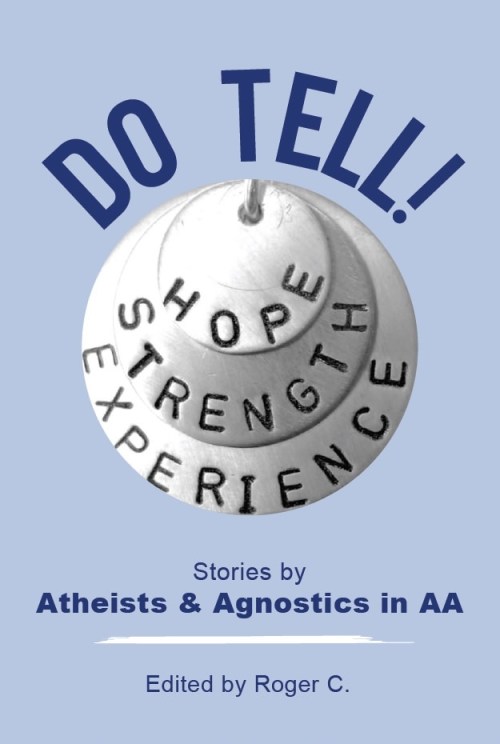



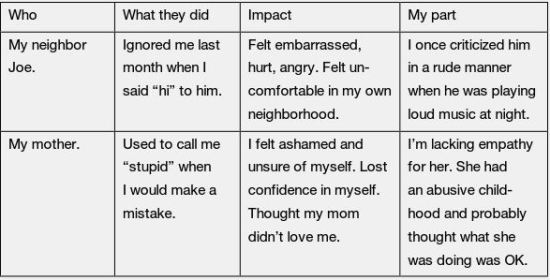

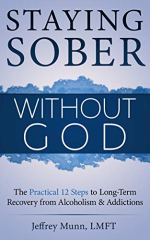
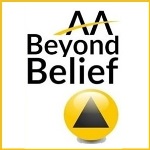


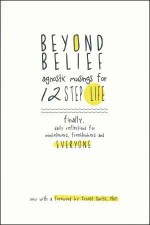

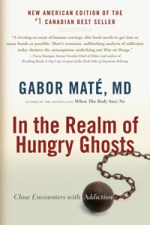


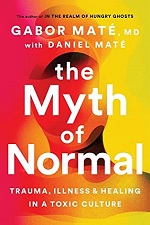

 However, my personal practice of meditation, whether zazen, or counting breaths, or repeating a mantra or mindfulness, etc. for most of my long term recovery has been sporadic at best. I’ve mostly been a do-as-I-say kind of a guy, rather than a-leading-by-example sort of chap.
However, my personal practice of meditation, whether zazen, or counting breaths, or repeating a mantra or mindfulness, etc. for most of my long term recovery has been sporadic at best. I’ve mostly been a do-as-I-say kind of a guy, rather than a-leading-by-example sort of chap.